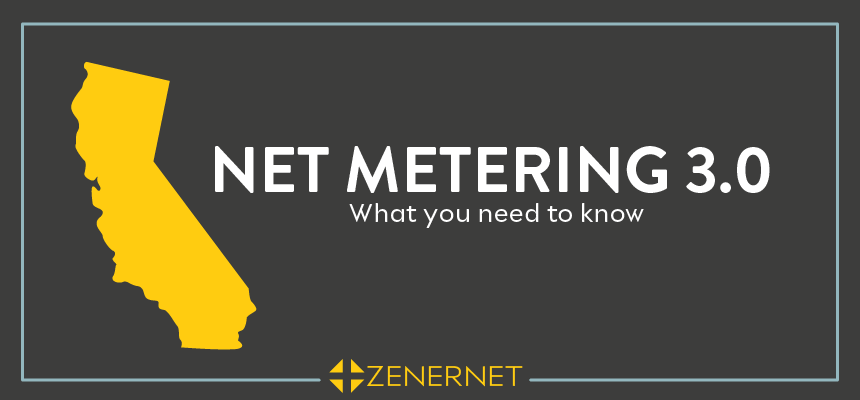
First of all, what is NEM-3 and what does it stand for? NEM is an acronym for Net Energy Metering and concerns the tariffs and fees applied when retail and commercial users sell power back to the grid.
https://www.seia.org/initiatives/net-metering
NEM-3.0 is an update to the current feed-in tariffs under NEM-2, if the Public Utility Commission voted to accept the proposed changes. If you live in California, you can still voice your objections to the PUC in California at 415-703-2782 (good luck trying to reach anyone, though, we have tried many times). Once the PUC decides on this proposal, the changes will take effect 4 months later.
What is the intention? The proposal has this to say about the intention of these changes:
Our review of the current net energy metering tariff, referred to as NEM 2.0, found that the tariff negatively impacts non participating customers; is not cost-effective; and disproportionately harms low-income ratepayers.
If these changes will affect the actual solar market for low-income ratepayers remains to be seen, but NEM-3 does provide incentives for low-income customers. However, another reason is the growing market for home batteries, which can be used effectively to avoid feeding back into the grid.
So, let’s get to it! What changes are we to expect? Generally, we’re referencing changes for residential solar customers only. Also, NEM-3.0 only affects you, if you have signed – or intend to sign – an Interconnection Agreement (needed when selling back to the grid) in California. CraftStrom kits are not affected by the Public Utility Commission, since we do not feed power back to the grid!
Solar Credits
Solar credits – or the feed-in-tariff applied to power, which is sold by residential customers to utilities – will be greatly reduced. It seems that utilities will only have to pay around 5 $ Cents per Kilo Watt-hour (0.05$/kWh), down from currently around 0.25 – 0.30$/kWh. However, there will be slight variations in this price depending on hour of the day.
For instance, PG&E customers currently receive about 0.224$/kWh, but would only be paid 0.049$/kWh as of May 28th, 2022. There will be no transition period. Once NEM 3.0 goes into effect in May, the tariffs will apply immediately.
Solar Fees
Low-income residential and commercial customers are excluded from the following fees. Fees are applied on a monthly basis, for each kW in installed solar capacity and vary depending on whether utilities add so-called “rates” per month, which are then included in the Fees:
PG&E: 8$/kW, so 10kW of solar will come out to $80 per month in feed-.in fees only.
SCE: 8$/kW plus 12$, so 10kW will cost you $92 per month.
SDG&E: 8$/KW PLUS 16$, SO 10kW will cost you 96$ per month.
Example of NEM 3.0
Let’s use a best case scenario and assume that you are not a low-income customer, with a 10kW solar array under the current NEM-2 scheme with PG&E. A 10kW array will provide about 1,300 kWh of energy per month, on average in California (Oakland area), so let’s use this number to calculate how much you would receive now, versus in 4 months, should the CPUC decided to adopt this policy change. PG&E pays 0.224$/kWh, so 1,300kWh x 0.224$/kWh = 291.20 $. NEM-3 would reduce this to 0.049$/kWh, leading to only $63,70 in solar income, or $227.50 less (that’s a loss of 78%, btw). However, now we still have the solar fee, which comes out to $80, as we calculated above, which you will have to pay, even as winter will see your production drop to as little as 883 kWh in December, or $43.27. Pretty measly, considering you probably paid around $30,000 for your system.
The Market Transition Credit NEM 3.0
As you noticed from above calculations, there wouldn’t be much in incentives left to invest in solar, so the proposed NEM-3 describes the credit as “the amount necessary for a customer to achieve a 10-year payback period”. Not all utilities have agreed with this credit, so far, and only PG&E, as well as SCE have proposed such credits:
PG&E
Low Income: 4.36$/kW per month for 10 years
Others: 1.62$/kW per month for 10 years
SCE
Low Income: 5.25$/kW per month for 10 years
Others: 3.59$/kW per month for 10 years.
The Icing On The Cake – Retroactive Changes
The current 20-year eligibility period for NEM-1 and NEM-2 is reduced to 15 years for non-low-income residential customers.
Conclusion to NEM 3.0
CraftStrom customers will not be affected by this change, as you can avoid interconnection agreements entirely. The change is clearly targeted at battery systems, as they are becoming more affordable and intelligent. All in all, it’s a harsh change, but it is similar to changes seen in other markets, such as Germany. Once the technology has been sufficiently disseminated in the market and investing in solar has become a financial instrument, subsidies and prices are often reduced. Again, you can still voice your opposing views until the 27th.
All the best,
Stephan Scherer














